Emakina review: 2010-2019
It sure might feel as if this decade was a long one. Coincidentally, recapping it on your own would take quite some time. That’s why we’ve got you covered on the topics that left their mark.
We asked our intern, Iva Filipović, who was the only person still working at the Emakina office between Xmas and New Year’s Eve, to write a summary of the last decade, so you can sound smart in the next family gathering.
The very beginning of the decade came with the challenge of recovering from the financial crisis that shook the globe between 2007 and 2009. Nevertheless, its impact didn’t jeopardize the development that was about to emerge throughout the following years.
Birth of the new platforms
2010’s were a rollercoaster when it comes to platforms and revolutionary in terms of how they’ve changed the way we communicate. Traditional SMS-ing was yet to recover from the damages it sustained by slowly being replaced by messaging within Facebook and applications such as Whatsapp and Sina Weibo that appeared in 2009 and truly challenged the SMPP protocol as the new internet protocol-based apps. Just a year later we got Instagram and Pinterest. Threatened by the Whatsapp’s and Instagram’s success and the speed at which they grew, Zuckerberg was quick to add both to his growing Facebook empire by 2012. It wasn’t the only threat and 2011 founded Snapchat soon became of significant interest. However, to many people’s surprise, Facebook didn’t manage to acquire it. Once the initially steamed game of chess between the two cooled down, Facebook played an astounding move in 2016 by incorporating a Snapchat-like feature to Instagram now known as Stories. The same year Chinese company Bytedance introduces an app Douyin for the Chinese market. Shown to be an instant hit, the company introduces the same app under a different name for the outside of the China markets called TikTok. People have quickly picked up on the highly addictive content reminiscent of the once beloved Vine and Musical.ly (bought by Bytedance). To be noted is the fact that regardless of Bytedance’s effort to display Douyin and TikTok as one, they’re actually two separate entities operating on and catering to different markets.

Death of the icons we’ll remember for eternity
Early into the decade, 2011 hit us with the death of the chairman, CEO and co-founder of Apple, Steve Jobs. Jobs’ genius shone through his work as he, through years working at Apple, introduced products that were pioneering and setting the bar on the market. Even after Wozniak’s departure from the company, Jobs and Apple continued to thrive across the globe.
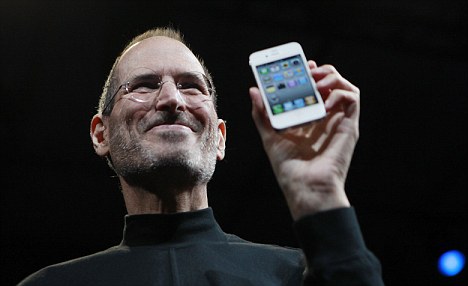
Two years later, in 2013, South Africa said goodbye to one of its most important leaders who stood behind his stance of despise towards apartheid even when it meant repeatedly being thrown behind the bars. Mandela, who preached peace, forgiveness and acceptance became an important symbol for human rights, fight against AIDS and anti-apartheid campaigns all over the world.
Another notable person we gave our farewell in 2013 was Neil Armstrong. “That’s one small step for a man, one giant leap for mankind.” is what we recite on the mention of this name, and we remember him not only for first walking the moon’s surface, but for being an astronaut, a naval aviator, pilot and a university professor. An interesting fact that he obtained his flying license before he could drive proves he was destined for the sky-high, and above, adventures.
2018 was the year we mourned the loss of Stephen Hawking and Stan Lee. Hawking left a legacy that will resonate forever as he was first to set out a theory of cosmology. A boy once predicted not to live past his early 20’s became an important figure for many of his scientific works, including the widely known Hawking radiation which theoretically predicts that black holes emit radiation. “Widely known” might be a reach as those unfamiliar with the greatness of his work will vaguely remember him only for his cameo in the series “The Big Bang Theory”.

Stan Lee stands behind some of the most legendary comic-book characters. His Marvel comics had a truly innovative approach opposed to comics that until that time exclusively catered to a very young audience. Lee had a huge impact on comics becoming a format cherished by all age groups. A great contribution to doing so is his invention of the thought balloons which helped explain characters’ inner thoughts and give them a more human and life-like dimension which people could relate to.
Designers who tailored their way to the fashion spotlight
Whether we completely realized by now or not, fashion is all around us and it has evolved throughout the decade – especially through the clothing pieces. It slowly gained a reputation of a not less worthy of a communication channel than, for instance, newspapers are. A fashion collection, accessory or a garment is a representation, a symbol, a statement, a rebellion to the trends before and a bar set for the trends to come. A designer known for its outstanding, unique and rebellious work was Alexander McQueen who deprived us of many of his works to come as he left us at a young age of 40 in 2010. Contrary to many static fashion shows, his were interactive, extravagant and dramatic pieces of art.
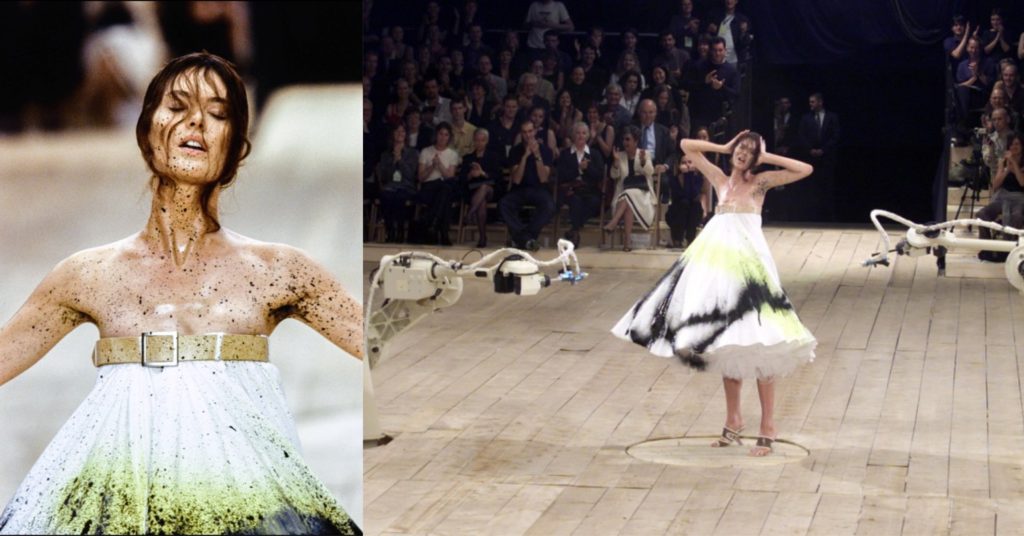
Another loss to the fashion industry was that of a Tunisian couturier and shoe designer Azzedine Alaïa in 2017 whose creations were worn only by the “big names”; Madonna, Tina Turner and Naomi Campbell to name a few. Azzedine Alaïa’s view on fashion was remarkable and very different from the new market and sales driven approach brands started to take on. He was true to what he thought fashion was supposed to be and despised brands who only did clothes to get the word out and earn money. He only made shows when he had something to show, as stated by Catherine Laurdeur, the former editor-in-chief of Marie Claire.
We couldn’t have enjoyed McQueen’s work in this decade, but we sure did the ones of Karl Lagerfeld, who passed away in the 2018. Always true to his style, Lagerfeld was well known for his signature look: white hair, a ponytail, collars, black sunglasses, and fingerless gloves. People will remember him for his amazing work at Fendi and Chanel and the fact he was also a photographer and a caricaturist. The same year Hubert de Givenchy was another big name passing. He famously designed pieces for Audrey Hepburn and John F.Kennedy’s wife, Jacqueline. Even after retiring from his house Givenchy, it stayed a widely respected fashion house with successors like Galliano, Tisci and even previously mentioned McQueen.
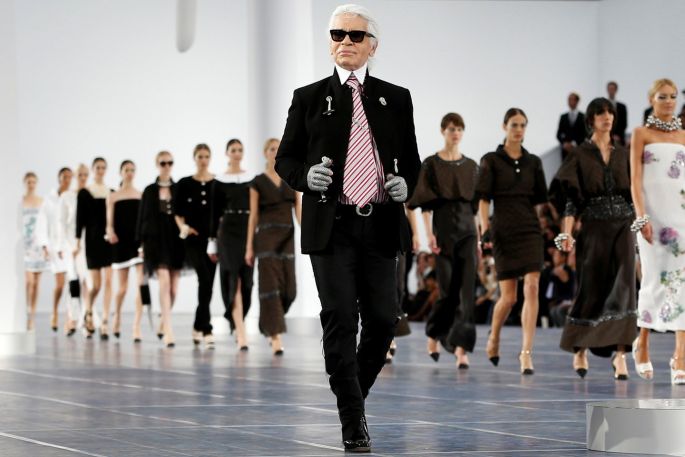
To add to the list of these men is an American fashion designer and businesswoman Kate Spade, who passed away in the same year, 2018. Very early into her career she identified a niche of women seeking high quality handbags and started the Kate Spade New York in 1993. Kate Spade was then, and remains, a synonym for stylish, well-made and desirable accessories.
Decade of awareness
People started paying more attention to the world around them, especially when it comes to mental illness, climate change and social inclusivity.
Mentioning all the public figures who we lost in the past decade would overtake the article but it’s important not to oversee that many of these were subject to negligence which ultimately led them to their self-destruction. Negligence in question is the one experienced from the governments and the society itself not offering preliminary treatment options and necessary help for the troubled ones. To tie mental health and well-being issues to the entertainment industry exclusively would be completely wrong, but it is their globally known personas who shed a light on the underlying issue.
Club 27 was slowly growing in the previous decades, adding stars like Hendrix, Jim Morrison, Janis Joplin and Kurt Cobain who lost their lives to an overdose or a suicide. This decade we lost artists like Amy Winehouse, Whitney Houston, Prince and Juice Wrld to an overdose, seven Korean entertainment celebrities to suicide and many more. Although not causing his own death, Michael Jackson is another suffering soul to be added to this list. Since young age, he was ridiculed for having a “fat nose” which made him pursue dangerous surgeries. As if Michael’s fragile confidence and anxiety issues weren’t prominent enough, media loved to suggest that another procedure he had was that of his skin – although he quite obviously suffered from vitiligo. It seems that the world nowadays no longer dismisses the issues one might face as many public figures and organizations appeal the troubled souls to reach out before it’s too late. However, there is a difference between acknowledging the issue and taking action. Simple appeals are just the first step, but a necessary one to get even more exposure to the issues.
World has never been more aware of the climate changes happening around us. An important piece of document signed in 2015 is the Paris Agreement dealing with the global warming (greenhouse gas emissions in particular) which, by 2019, was signed by 195 UNFCCC members and 187 have become a party to it. Although well perceived by public at the time, its effectiveness was soon doubted because of the unequal enforcements across the countries where many were called out for keeping empty promises instead of taking action following what they initially signed up for. Name that must ring a bell when thinking of global warming is Greta Thunberg, who was proclaimed one of the most influential people of our time for the efforts she’s made in fighting the changes. Although it’s natural many are doubting her campaign and the legitimacy of her image, no one can dismiss that she shifted attention towards the rising problem. However, she is not the sole problem solver. Xiye Bestida, John Paul Jose, Luisa Neubauer, Holly Gillibrand, David Wicker, Lilly Platt and our Anuna De Wever are just a few names of our youth hoping and fighting for a healthier planet for our and the generations to come. Movements like 20 million trees in response to us losing a big part of the world’s lungs to the fires, the Amazon rainforest, proves that people are still keen on doing their part for the better future.

Politics, religion, and finances used to be the main taboo ready to ruin any social gathering, family reunion or a speech. In the decade beginning, race and culture have become the things to add on to the list. Minorities and people of various races have taken things into their own hands, with many influencers and figures empowering them and teaching others of inclusivity and the difference between the cultural appreciation and appropriation. This is not to dismiss the fact that some people are still being rejected from groups, gatherings or job offers for their skin colour, hair etc., but to note that things are moving towards the better and it’s not as nearly as bad as it used to be. There also seems a sort of a rebellion happening, where people are no longer reluctant to protest or express their opinions and are less likely to break under peer pressure, or to conform and comply to the ways of imposed authority and society’s norms. Especially unrealistic beauty standards. South Korea sees an awakening in a way of people embracing their natural skin colour with cosmetic beauty brands introducing more than two shades of pale ideal they used to exclusively cater to. African American and other black women embrace their natural hair and dismiss the skin bleaching culture (in countries and parts of the world where it’s prominent). Women across the social media are abandoning the facetune culture step by step as natural becomes the new wave. To claim that plastic surgery business isn’t booming anymore would be an understatement but note that both women and men are now doing it more for themselves than for what society expects them to be.
Reign of the feminists
Women empowerment was the center activity of feminism for years, including fighting the gender inequality, stereotyping, patriarchy, oppression and objectification. Various sources divide feminist activities into four waves. Accordingly, the combats this decade’s wave fought are the ones against the sexual harassment, violence against women and the rape culture. The movement was named Me Too and was followed by a hashtag #MeToo across the social media. Me Too gave women a kind of empowerment they should’ve had long before, and that is having the strength to be vocal about their experiences, hardships and survivals whether it happened at home, in public or in the workplace without feeling unsafe or threatened. Movements creator, Tarana Burke, insists the movement isn’t only about women and that men too are an important piece in creation of a safe working, living and studying environment.
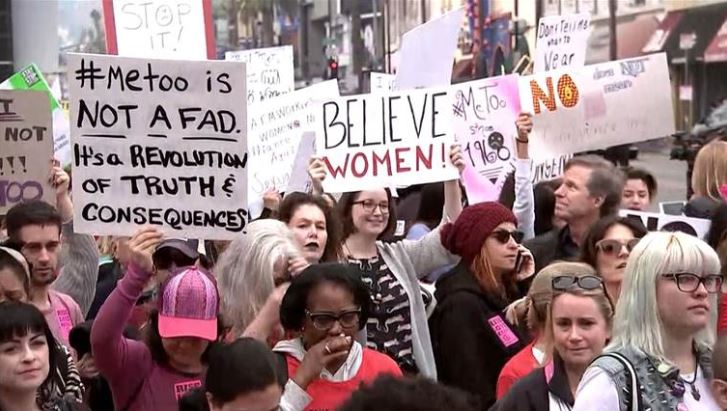
Impact of the movement was huge. US acting on it started by banning agreements that cover articles that enable sexual harassment used by many powerful men such as Harvey Weinstein. There have been funds made to support troubled women across the world. Accusers started being outed to the public which resulted in sudden resignations of powerful people across the globe. Women started publicly testifying their experiences, one such example is Ahn Tae-geun whose accuser was jailed in 2019 after her testimony in 2018 encouraged by the Me Too movement. Legislative reforms in America shortly began to be followed across the Europe, China, India and the rest of the Asia, reaching majority of the countries across the globe.
Although making an impact, #MeToo’s hands are tied in situations where the people in question are too powerful. A single case demonstrating that instance is the Jeffrey Epstein case. Although #MeToo helped draw charges against him, he was taken down in just the right time when what he became a liability that could’ve exposed the very elite’s wrong doings. That event was followed by a global meme “Epstein didn’t kill himself” which at first drew attention to inconsistencies surrounding his death but later had more of a comical than a significant impact. Those inconsistencies were removal of his cellmate, two guards conveniently falling asleep and malfunctioning of the two cameras in front of his cell at the time of his death. You be the judge. The men who were associated with him are not dead, yet, but the one whose feet are burning at the moment is Prince Andrew, The Duke of York.The movement had seen great success in terms of media coverage as it became globally spread, with women around the world joining it. However, some things surrounding it were debatable. Because of the movement, fear of women easily faking the assaults has made men fearful that it might happen to them, which resulted in less women being hired. According to a US study published by SAGE in 2010, only 2-10% sexual assault allegations reported end up being false after the investigation. Regardless, after the movement, The Pew Research Center found that 51% of the workers feel that #MeToo made interactions with the opposite sex harder. Instead of bringing people together, the movement might’ve created an even greater of a gap than it originally was between the two sexes.
A decade of evolutions and game-changers
Big data and deep learning, VR and AR, 3D modeling and printing, virtual assistants and voice recognition, cryptocurrencies and ICOs, drones and robots, hoverboards, electric and hybrid vehicles, e-cigarettes, shared mobility: car-sharing, bike-sharing and scooter-sharing services, freemium games & apps, cloud gaming, cloud storages and cloud software, 4G & 5G, Bluetooth 5 and UWB, biometrics… the list goes on. This decade was truly remarkable with the innovations it brought us which makes us excited for the decades to come.
We live in a world where the amount of data available, capacity of the storage for that data and machine learning processing power exceeds everyone’s expectations. Elon Musk and others called it out – we indeed are becoming modern-day cyborgs with our smartphones, smartwatches, wireless earphones, smart glasses and others acting as our extensions. There are always people who are steps ahead, such as the man who implanted a wireless Tesla Key chip into his hand to be able to seamlessly unlock his car. Could be a bit of a reach to consider it a future trend but doesn’t seem highly unlikely as everything once doubted now becomes graspable, probable and possible. Another thing very near to our future is co-living and co-working as cyborgs with our fellow robots. The speed at which robot development is moving is remarkable. So much so that the humanoid robot Sophia became the first robot to receive citizenship of any country in 2017. It will still take some years before humanoid robots are amongst us though until then you might have to settle with amazing pet robots out on the market such as Sony’s Aibo’s 2018 version, a robot meant to be humans companion that interacts in a very similar fashion the real dog pets do.

Another great game changer are the neobanks that have as of recently been challenging traditional banks and got them running for their money. They’re fully digital and require no physical presence at the bank. More than often they offer better deals when changing between the currencies, investing in companies shares, withdrawing money or simply making purchases abroad. Some that have seen great success so far are N26, Revolut and Bunq. Predicted to grow in the future, neobanks still struggle to attract customers and create profitability as they need to compete with powerful traditional banks. In attempts to optimize and cover the costs it’s usually their customers services that suffer – not quality but agility wise. Traditional banks have had an enemy older than neobanks called cryptocurrencies. Fear first introduced by them was short-lived. After initial fast-moving growth of bitcoin, the cryptocurrency started fluctuating too much, making it more of a gamble than the investment, coincidentally making clients liable to losing all their investment. It is, however, hard to estimate whether the golden peak for investing into them is over, though people are more than often questioning it and returning back to gold investments. Cryptocurrencies that grab the most attention at the moment are bitcoin, ethereum, ripple and litecoin.There almost isn’t a single person who doesn’t remember the legendary victory of the Deep Blue computer over the World Chess Champion Garry Kasparov. A similar battle marked our decade and it was between the computer AlphaGo, a software developed by Google’s sister company Deepmind, and Lee Sedol in 2016. Lee Se-dol, the only human to ever beat the AlphaGo, retired in November 2019 as after 3000 years of human supremacy, scientists have created digital entities that cannot be defeated. The current Go champion is HanDol, a program developed by South Korea’s NHN Entertainment Corp, which has already defeated the country’s top five Go players.

DNA printing and editing
In 2010 Science Magazine reported that there was a successful genome synthetization of the bacterium from a computer record and then its transplantation into the existing bacterium that had the DNA removed. Artificial gene synthesis had since then been popularly called DNA printing.
Some other “movie-like” achievements which make cloning seem closer than ever are the first camel ever to be cloned in 2009, the first goat in 2012 and macaque monkey in 2018. Bringing the dead to life doesn’t seem so far either. Well, partially, as there was a successful cloning of the extinct animal in 2009 which unfortunately resulted in it dying after 7 minutes of living because of the lung defects.
The same decade term “designer babies” emerged, babies whose genes have been “designed” or altered so that there are wanted genes implemented and/or unwanted genes removed in case they’re associated with some type of disabilities or diseases. Some countries have already permitted the treatment while some prohibit it entirely. Some have found themselves in the middle, allowing it under very specific cases for medical purposes. The method consists of the analysis of a wide range of human embryos to identify the ones ideal for the implementation.
That method differs from the CRISPR CAS9 gene editing. It’s a method of editing living organism’s DNA which is far more advanced than the bacteria edited before. In 2015 it became one of the AAA’s possible breakthroughs of the year. However, ethical concerns have been higher right from the start, and it was quickly frowned upon after there was a shift from experimenting on bacteria and other organisms to editing human germlines. Method consists of editing the genome (person’s DNA) directly before birth, which was achieved in 2018 by a Chinese researcher, He Jiankui. Him and his designer babies, Lulu and Nana have been many critics target ever since as public has been outraged and worried for their well-being. He Jiankui has been under surveillance by the Chinese government ever since although new claims have resurfaced that the Chinese government may have funded his work partially based of the newly resurfaced documents. Just two days before the end of the 2019, He Jiankui has been sentenced to 3 years of jail on charges for practicing medicine without a license and unethical gene editing where he used the CRISPR technology to try and make the embryos HIV resistant. Upon further research of the work’s manuscripts, MIT Technology Review announced that some claims within were deliberately false and that Jiankui and his team have instead created new mutations not only in the gene that they targeted but in the multiple places within the genome for which the consequences are unknown. Whether we like it or not, gene editing is the future. What Jiankui and his team have done doesn’t represent a breakthrough or something new and extraordinary. It’s simply a representation of the bottom ethical line being broken, and it is only a matter of time when someone will do it using the right protocols. Those protocols will have to include a set of rules which, when followed, should not predispose edited embryos to have the diseases we have no knowledge of and we were protected from until now.

In 2011 HIV treatment was proven effective as Timothy Ray Brown became the first person to be cured from HIV. Years to follow were successful in terms of treating and managing HIV with the existing treatment, but not removing it like in Timothy’s case. It was reported this year that there was a second person successfully cured from HIV using bone-marrow transplants.
The challenges
GDPR implemented in 2018 made a huge impact in the EU market bringing, again, positive and negative things along the way. Internet used to be this place you could find anything and everything without any restrictions. Everything worked swell until content creators started claiming what they made. Rightfully so, as many industries’ entertainers for example, who previously made a living on selling physical copies of their work, now had to find new money-making channels by selling music through streaming services, selling merchandise and collaborating with fashion or other houses. This you’ll probably agree is not the problem. The real problem is that searching for the most banal and simple fragments of information can end up being a hefty task because of the restrictions, of the amount of information, ads that are taking unrecognizable forms and lack of search engines ability to filter out these massive amounts of data. Therefore, there has been a rise of ad blockers, VPN, smart DNS, and networks like TOR. The Internet 2.0 idea we’ve lately been hearing a lot about doesn’t seem so distant anymore either.

Another challenge we face is a complete shift in the way of thinking. Although people seem to be more aware of the world around them, they do it only to an extent where it slightly spikes up their dopamine levels so they can briefly feel good about themselves, forget about it later and continue living their fast-paced lives. This led to a huge rise in selective empathy. A great example is the McDonalds campaign titled “Do you need a straw?” implemented in a few selected countries where people were encouraged not to use a straw and were not given one unless they asked at the counter. From a marketing standpoint they did a great job though it completely defies what it was initially intended for: saving the environment. To put it short, people first praised McDonalds for minimizing the plastic straw usage – but they still remained plastic as well as the lids. This year McDonalds started replacing plastic straws with paper ones though people quickly pointed out that they weren’t even recyclable. McDonalds’s official statements since then were that they’re working on fixing the problem.

Situations that’ll be interesting to see how they unfold are the impact of the pressure retiring boomers are putting on different countries’ pension programs, ongoing wars, handling data protection and management on a global level, complying with the countries whose parts of political ideologies have moral compass not compatible with most of the world (for eg. China detaining non-citizens, especially muslims, and throwing them into borderline concentration camps, Kingdom of Saudi Arabia tracking wives or Russia forcing their Russian app alternatives onto users smartphones, Google and Apple enabling the online slave markets by approving apps in the Middle East that support the purchase and sale of the slaves), replacement of existing vehicles with electricity powered ones and deployment the infrastructure to charge them, living space infrastructure’s back breaking on the growing population, crude oil reserves running out and technology becoming both the “necessary evil” and our unavoidable ally.

Things that will mark the next decade
One of the Climate Change consequences will continue to be the shift of civilizations paradigm to a cleaner, leaner, less polluting way of living. Proofs are the newly risen lifestyles including zero-waste, free-range, gluten-free, non-gmo, vegan, vegetarian or a combination of such. Besides the lifestyles there are different law enforcements each country is establishing in order to partake in planet’s preservation such as incentives for installments of the solar boards on homes, limiting the cars speed, electric cars, etc. Although debatable if effective on helping the environment on a larger scale, it seems to have a positive impact on the human well-being and their proximate environment in the countries that partake in implementation of the most changes suggested. It will be interesting to see if the impact will manage to take on a larger scale in the following years.
Next decade might be the decade in which superhuman cultivation begins considering the advancements in biotechnologies, particularly previously mentioned DNA editing that took place in the previous decade. There is a very thin line between whether this will turn out terribly wrong, with people taking advantage of it and not following safety protocols like He Jiankui, or incredibly well for the future of humankind, which could then become resistant to many environmental challenges us humans are facing now.
Are you ready to take a train which will take you through 17 countries in one go? Get ready to pack because China build a high-speed rail connecting Beijing and London. China would do it on their cost but in return requests rights for the usage of the natural resources from the countries benefiting from the venture. Although hardly to happen within a decade because of the bureaucracies of each country to partake, it is still fun to look forward to.
NASA SSERVI published in 2019 that Japan is about to build a 2-billion-dollar robot moon base in 2020. Robots will move with the help of the rolling treads and will be equipped to investigate the Moon, its surface, our solar system and provide rock samples which will then be transported to Earth by a rocket.
Automatic cars were the term attributed to all the vehicles freeing us from shifting gears manually. However, in the new decade we might experience completely automatic self-driving cars. Once the infrastructure is established, it could be possible that all the cars would be linked, creating a self-driving car network which would completely free people from ever having to drive again.
The memes
Before we dive into the glorious meme culture, it’s important that memes in general differ from what we know as an internet meme. Memes have been with us from quite some time and have seen an amazing transformation throughout the years. The first time the word meme was introduced was by Richard Dawkins in his 1976 book The Selfish Gene where he suggested the ways in which cultural information is shared although the concrete concept was first proposed in 1993 June issue of Wired by Mike Godwin. A meme stands for a behavior, ideologies or specificities attributed to a certain period of time, a year or even a month which are then shared from person to person, from a group of people to another group or from a culture to culture. Internet memes are exactly that, however typically a piece of media, which combines still images, GIF’s or videos with a piece of text or a catchphrase. Covering all the memes that marked this decade would cause a grey hair or two. To debate on whichever one was the meme of the decade is even a more dangerous path to take considering how opiniated netizens are. However, there is one meme in particular I hope grabbed everyone’s attention, as it might’ve caught yours as well at some point because it managed to reach most of the globe. At the time of writing this article on the 31st of December even the memeofthedecade.net votes made Pepe the meme of 2015 which made me even more eager to speak up on it.
Pepe the frog was one of the most long-living memes that steadily grew in-between 2008-2015, reaching its peak in 2015 and 2016. What makes this meme exceptional is the controversies surrounding it, the scale it took and its journey from something once positive to a meme wrongly associated with racism, hate and the alt-right movement.Pepe was a comic book character who quickly gained the fame when first introduced as a meme. Reason behind the popularity is the fact that it was so versatile that it could be used for virtually anything which made celebrities and other public figures quickly jump on the bandwagon. Pepe’s versatility became a beloved meme itself, but the things were about the change, as Pepe was about to be used in a way that rubbed many the wrong way.
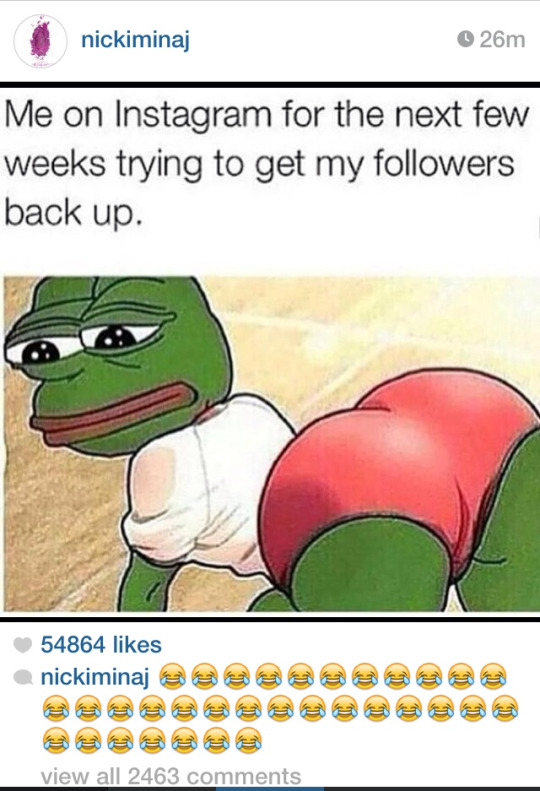
In 2015, Trump retweeted a Pepe version of him and later in the campaign posted an Instagram post with Pepe’s face, Trumps family and well-known alt-right figures after which US and some global media quickly picked up on it and proclaimed Pepe an alt-right, racist, white nationalist and a hate symbol. A man who created Pepe in 2005 tried to save him by creating a movement with the hashtag #savepepe. People of the internet, ADL and many others tried to reverse the negative impact, but it turned out it was too late for defamed frog to became something positive again. The creator, Matt Furie, opted for the inevitable and decided to kill Pepe the frog by creating the one last comic strip picturing its funeral. This didn’t stop Pepe from being used in a negative way though it helped Furie distance himself from what it had become.
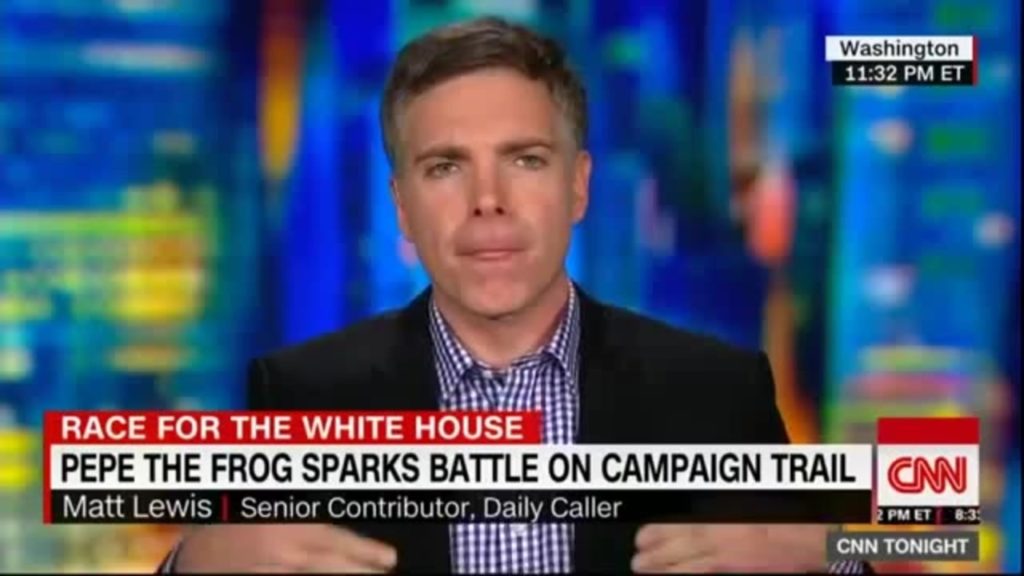
Problem with Pepe was that people genuinely thought the sole intention and creation of it was to spread hate. Not long after Pepe, another symbol used to symbolize the white power was the OK hand gesture. This time the 4chan users decided to make it that just to troll. Nevertheless, it didn’t stop the biggest news channels to fall for the meme once again and actually display it as a hate symbol. What Pepe and memes in general taught us is not to underestimate their power in shaping the general public opinion, especially when controversial or negative. After all, that is what drives the traffic and makes the headlines. It also goes to show that power of making a symbol positive or negative lies within the netizens. By validating and pursuing something as negative or positive they empower the meaning behind the symbol to become the same.
2019 was full of things that were memed; the first picture of the black hole, Elon Musk laughing at a dead deer, baby Yoda, ok boomer, Keanu Reeves, Storm Area 51 and woman yelling at the cat meme to name a few. Below are some of honorable mentions not necesarrily tied to 2019.
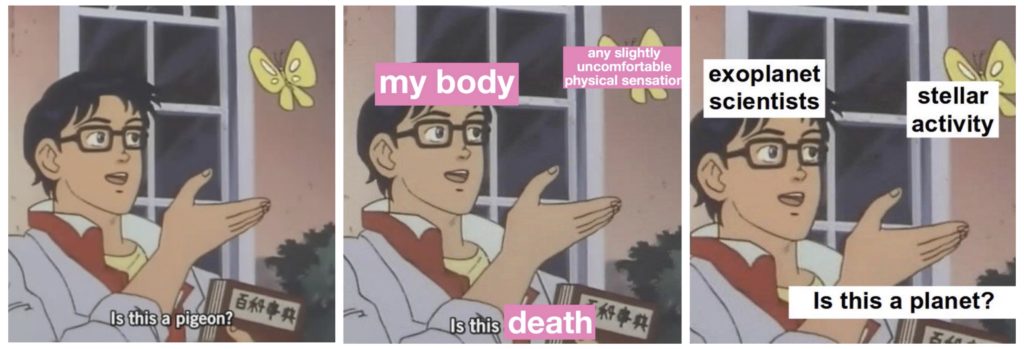




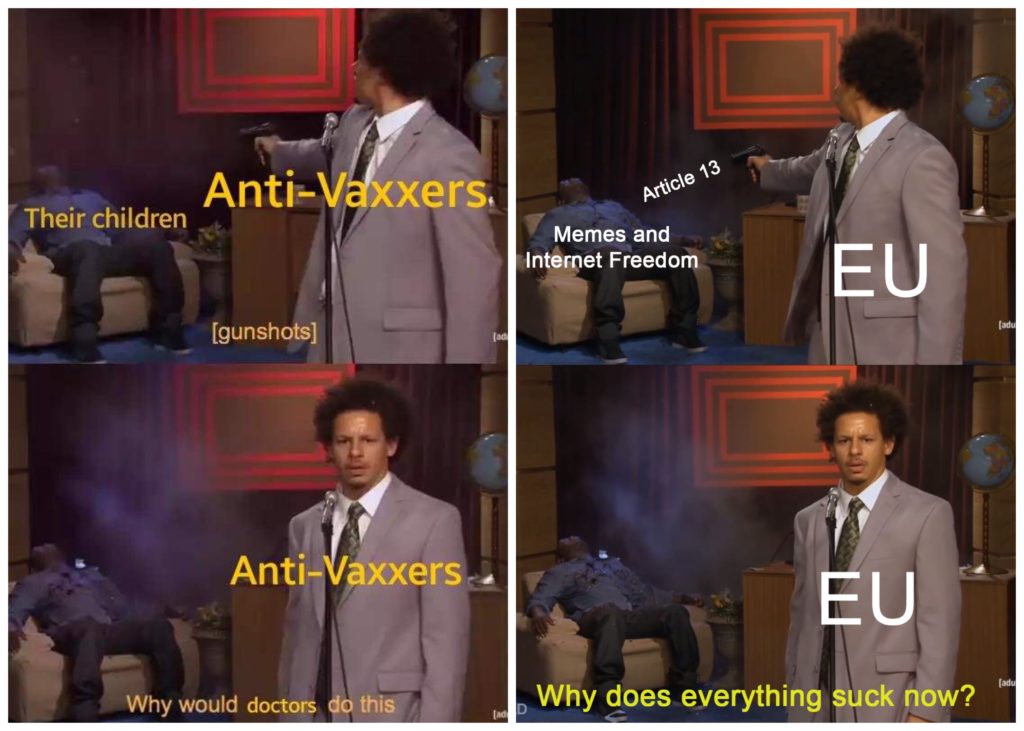
A few last words
If you’ve made it through an entire article, you’re a true champ and I thank you from the bottom of my heart in hopes that I managed to cover some things that sparked your interest or that you were glad to remember as you might’ve forgotten them. As the end of the 2019 approaches the end, I wish you in the name of all the Emakina.BE’s staff a Happy New 2020 Year. May this new year be fulfilled with new adventures, achievements and happy moments in which your wishes come true.




